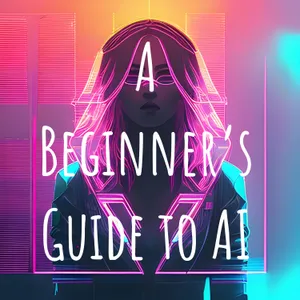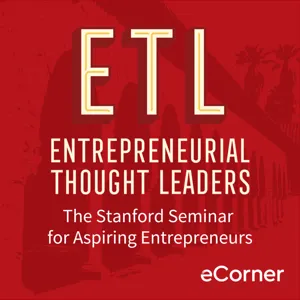Podcast Summary
Open vs Closed Source AI Frameworks: Implications for Collaboration and Control: Open source AI models offer greater collaboration, innovation, and access, but come with risks of misuse and unintended consequences. Closed source models offer greater control and security, but limit collaboration and transparency. The choice between open and closed source has ethical and societal implications for AI development.
The debate between open source and closed source AI frameworks has significant implications for the future of AI development. Open source models, like Llama 3, offer the potential for greater collaboration, innovation, and access to advanced technologies for a global community of developers and researchers. However, this comes with risks, such as potential misuse or unintended consequences of widespread access to cutting-edge AI technologies. Closed source models, on the other hand, offer greater control and security, but limit collaboration and transparency. The decision between open and closed source is not just a technical one, but also has ethical and societal implications. As AI continues to evolve and shape our world, understanding these implications is crucial for ensuring responsible and beneficial AI development.
Open Source vs Closed Source AI Development: Open source AI development encourages collaboration, transparency, and innovation, but comes with risks. Closed source offers tailored solutions and stability, but restricts user control.
The open source and closed source models represent two distinct approaches to AI development, each with its advantages and disadvantages. Open source software, characterized by its freely accessible source code, fosters a collaborative environment that accelerates innovation, enhances security, and promotes transparency. The recent release of Llama 3 as an open source model symbolizes this philosophy, potentially democratizing AI advancements. However, this approach comes with risks, including potential misuse and ethical concerns. Closed source software, on the other hand, is proprietary and controlled by the developers, offering more tailored and stable solutions aligned with business goals. Yet, it restricts the user's ability to understand and modify the software, stifling innovation and potentially obscuring ethical issues. As we navigate the future of AI, it's crucial to consider how these models align with societal benefit, ethical AI development, and technological advancement. The open source model encourages a more inclusive and transparent approach to AI development, but measures must be taken to mitigate the risks associated with it. Using a pizza parlor analogy, open source is like a community kitchen where everyone can contribute, while closed source is like a private kitchen run by a chef. Both have their merits, but understanding the implications of each model is essential for shaping the future of AI.
Open Source vs Closed Source AI Development: Trade-offs and Case Study: Open source AI development allows for collective improvements and new innovations but risks spreading powerful technology, while closed source development ensures high quality and tailored solutions but at the cost of slower innovation and less transparency.
In the world of AI development, there are trade-offs between collaboration and competition, innovation and security, represented by the open source and closed source models. Using the analogy of a pizza parlor, in the open source scenario, recipes (AI technology) are freely shared, allowing for collective improvements and new innovations. However, this approach also risks spreading powerful technology into the wrong hands. In contrast, the closed source model keeps development under wraps, ensuring high quality, tailored solutions, but at the cost of slower innovation and less transparency. In today's episode, we'll explore this debate through the case study of two fictional AI companies, Innovai and Securitech. Innovai, representing the open source model, has recently released its latest language model, Lingomaster, to the public under an open source license, allowing developers worldwide to access and modify the code. Securitech, on the other hand, keeps its AI development closed, ensuring high quality, ethically sound solutions, but at the cost of slower innovation. Understanding these trade-offs is crucial for businesses and individuals navigating the complex landscape of AI development.
Open vs Closed Approaches to AI Development: Innovation, Security, Ethics: The open source approach to AI fosters innovation, democratizes access, and builds a diverse community, but requires careful management of risks and ethical concerns. In contrast, closed source strategies prioritize security and controlled usage, primarily for large corporations and governments, but restrict external innovation and transparency.
The approach to developing Artificial Intelligence (AI) technology can significantly impact its innovation, accessibility, security, and ethical considerations. The open source approach, as exemplified by Innovai's Lingomaster framework, fosters a vibrant and diverse community, accelerates innovation, and democratizes access to technology. However, it also requires careful management of risks and ethical concerns. Contrastingly, Securitec's closed source strategy ensures high security and controlled usage, primarily for large corporations and government agencies. This approach guarantees safety and reliability, builds trust, and protects proprietary technology from competitors and unauthorized users. However, it also restricts external innovation and transparency. This fictional case study highlights the complex interplay between innovation, security, ethics, and governance in the world of AI. Companies' decisions on openness or exclusivity will shape not just the development of AI technologies but also their integration into society and global governance. As we continue to explore the world of AI, it is crucial to consider these contrasting approaches and their implications. Join the conversation and deepen your connection with our community as we navigate the fascinating and complex world of AI together.
Stay informed about open source AI with Argobelin newsletter and resources: Explore open source AI through newsletters, tools like Llama 3, and platforms like Hugging Face for valuable insights and practical applications.
The world of AI offers numerous opportunities for learning and exploration, and staying informed about the latest developments and practical applications is crucial. Subscribing to the Argobelin newsletter is an excellent way to do this, as it provides valuable insights, tips, and tricks for both beginners and experienced enthusiasts. To deepen your understanding of open source AI, try researching and experimenting with an open source AI tool, such as Llama 3. This task not only helps solidify your knowledge but also allows you to experience the benefits of the open source community, like collaboration and flexibility. Additionally, exploring platforms like Hugging Face can offer real-world examples and discussions that provide deeper insights into the practical implications of open source AI projects. Overall, engaging with these resources can help you stay updated on the latest AI advancements and connect you with the ongoing conversations in the field.
Open vs Closed Source Debate in AI: The open source approach encourages collaboration and innovation but may pose challenges in controlling the technology, while the closed source model ensures high levels of security and control but may limit broader innovation and transparency. The debate goes beyond just AI development and impacts its integration into society and ethical governance.
The decision between open and closed source development in AI carries significant implications for the future of technology and its role in our lives. The open source approach, as exemplified by Innovai, encourages collaboration and innovation but may pose challenges in controlling the technology and preventing misuse. On the other hand, the closed source model, as seen with Securitec, ensures high levels of security and control but may limit broader innovation and transparency. This debate goes beyond just AI development and impacts its integration into society and ethical governance. Linus Torvalds, the creator of Linux, once said, "In real open source, you have the right to control your own destiny." This quote embodies the empowerment and collaborative innovation that open source enables, inviting us to reimagine how technology can be developed in a shared, transparent manner. As we continue to navigate the evolving landscape of AI, it's crucial to stay informed and critically engaged with these debates. In short, the choice between open and closed source is not just a technical one, but a societal and ethical one that affects how technology shapes our future.



